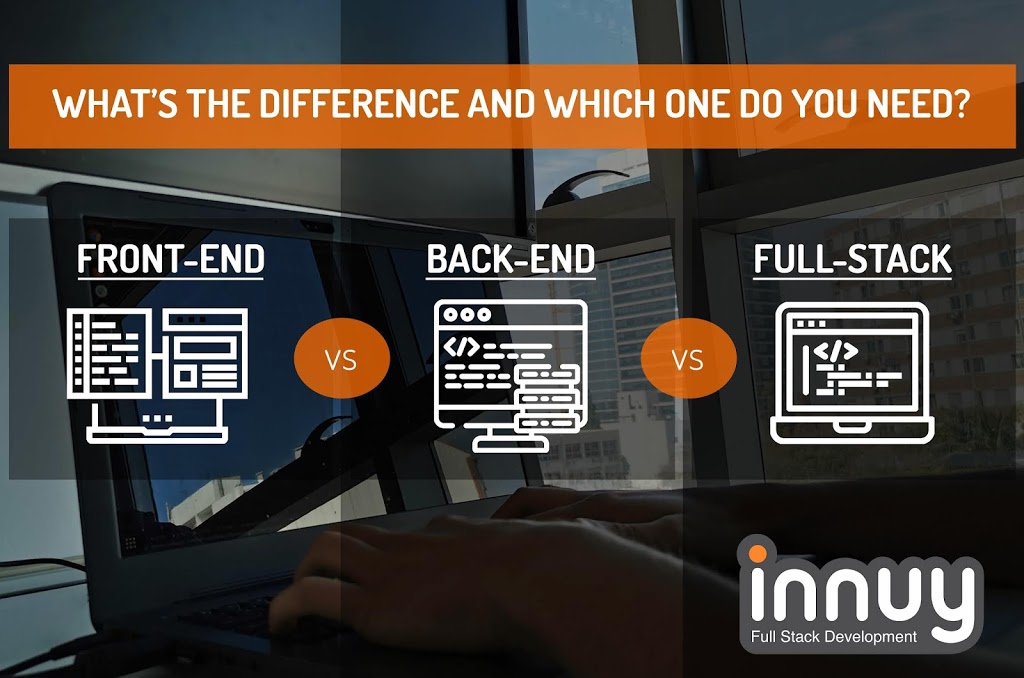If you’ve spent any time researching options for upgrading your digital presence or launching a new Web app, you’ve probably figured out the world of Web development has a lot of confusing jargon and tech-speak all its own.
Front End
Basics
The front end of a Web application is also called “client-side,” meaning it encompasses everything the browser (or client) displays or the user sees and interacts with (buttons, forms, links, etc.).
Structure
The “structure” of the front end could be explained simply as the content, graphics, and architecture (or organization) of the Web site. However, developers also include the code behind what the user sees when referring to the “front end” portion of a Web site because there is a definite distinction there from code typically used on the back end.
Languages
The coding languages that help power the front end of a site include HTML for page structure and organization, CSS for look and feel, and Javascript for interactivity. Javascript, in turn, includes various libraries and frameworks (React, Angular, etc.) that help provide different flavors of interactivity and can assist with connecting the front end with the back end.
Back End
Basics
Conversely, the back end of a Web site is described as “server-side” because it typically includes all the data-driven functionality that runs on a Web server in the background of a site, which users never see.
Structure
The structure of the back end of a Web site can range from incredibly simple to extremely complex, depending on user volume and site functionality. But every back end typically follows the same basic structure. Some type of database stores all the data used to power the Web site and make it useful to a visitor. A set of protocols and networking apps connect the browser to the server and power interactions between the two. And then a server and a set of server-side applications handle the site user’s instructions and inputs and communicate responses back to them.
Languages
The variety of languages used for the back end of a site or app is enormous and highly dependent on developer preference and skill as well as the site’s purpose, size, and functionality. A few of the most common back end languages include Python and PHP for server-side applications, SQL Server for data storage, and Linux, which is a type of server.
Full Stack
Basics
“Full-stack,” then, means, essentially, the full package – front end plus back end. The term “stack” in this case refers to all of the layers of a Web site: look and feel, interactivity, structure, data storage and manipulation, connectivity, and response.
Structure/Languages
The unique combination of structure and languages that make up the technology stack of a Web site depends completely on its purpose, traffic, and functionality needs and choosing exactly the stack you need is an important decision.

